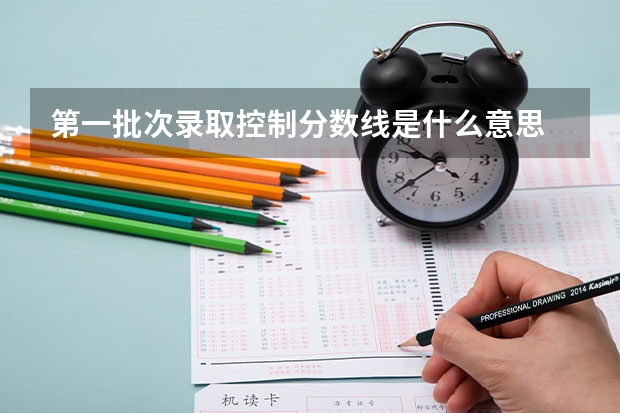13个必背的语法考点 考点整理
2023-03-15 01:07:17 | 三涯网
2022年高中英语语法总结 13个必背的语法考点
有很多的同学是非常想知道,高中英语语法有哪些,必背的语法考点是什么,小编整理了相关信息,希望会对大家有所帮助!

2022年高中英语语法都有哪些
基数词
表示数目多少或顺序先后的词叫数词。
1.基数词的构成:
1-10 one, two, three, four, five, six, seven, eight, nine, ten;
11-19 eleven, twelve, thirteen, fourteen, fifteen, sixteen,
seventeen, eighteen, nineteen;
20-90 twenty, thirty, forty, fifty, sixty, seventy, eighty, ninety;

≥ 100
100 a/one hundred;
1,000 a/one thousand;
1,000,000 a/one million;
1, 000,000,000 a/one billion = a/one thousand million
2. 基数词的用法
1)作主语:
Three will be enough for us.
三个对我们来说就足够了。
Two of the girls are from Tokyo.

这些姑娘中有两位来自东京。
2)作宾语:
Four people lied for this job, but we only need one.
四个人申请这工作,但我们仅需一人。
3)作表语:
The population of China is over 1.3 billion.
中国有十三亿多人口。
I’m twenty while my brother is sixteen.
我二十岁,我弟弟十六岁。
4)作定语:
We have 300 workers in our company.
我们公司有三百名员工。
Forty students were involved in the interview. 四十名学生参加了这次采访。
5)作同位语:
You two clean these seats.
你们两个打扫这些位子。
Have you got tickets for us three?
有我们三个人的票吗?
序数词
表示顺序或等级。
1. 序数词的构成:
1-10: first 1st; second 2nd; third 3rd; fourth 4th; fifth 5th; sixth 6th; seventh 7th;eighth 8th; ninth 9th; tenth 10th;
11-19: eleventh 11th; twelfth 12th; thirteenth 13th; fourteenth 14th ;fifteenth 15th; sixteenth 16th; seventeenth 17th; eighteenth 18th;nineteenth 19th;
20-90: twentieth 20th; thirtieth 30th; fortieth 40th; fiftieth 50th; sixtieth 60th;seventieth 70th; eightieth 80th; ninetieth 90th;
≥100:
100 hundredth;
1,000 thousandth;
1,000,000 millionth;
1,000,000,000 billionth
2、序数词的用法
1)作主语:
The second is what I really need.
第二个是我真正需要的。
The first bottle has been full but the second is empty.
第一个瓶已满,但第二个还空着。
2)作宾语:
I got a third in biology.
我生物得到了第三名。
Do you prefer the first or the second?
第一个和第二个你更喜欢哪一个呢?
3)作表语:
I will be the first to support you and the last to oppose you
.我将是第一个支持你的人,也是最不会反对你的人。
Columbus was the first who discovered America.
哥伦布是第一个发现美洲的人。
4)作定语:
I’ll try a second time and see if I can do it.
我还要试一次,看看我能否做得了。
Take the first turn to the right and then the second turn to the left and you’ll get there.
在第一个转弯处向右转,然后在第二个转弯处向左转就到了。
5)作状语:
He came second in the race.
他在赛跑中得了第二名。
It was a snowy day when we first met.
我们初次见面时是一个下雪的日子。
3、 序数词前冠词的使用
1) 明确指明了先后顺序或一系列事物按一定的规律排列时,序数词前用定冠词。
This is the second time that I have been in London.
这是我第二次来伦敦。
Alva is the fifth child of the Whites.
阿尔瓦市怀特家的第五个孩子。
2) 表示“又一、再一”,不强调顺序时,序数词前用不定冠词。
You have bought four toys today. Why do you want to buy a fifth one?
今天你已经买了四个玩具了,为什么还想再买一个呢?
I failed again, but I will try a third time.
我又失败了,可是我要再试一次。
3) 序数词前有形容词性物主代词、名词所有格或其他修饰语时不用任何冠词。
My first five years of childhood was spent with my grandparents.
我五岁前是和祖父母一块度过的。
Mrs. Black’s second child is a genius.
布莱克夫人的第二个孩子是个天才。
4) 序数词与名词构成复合形容词时,冠词由被修饰词而定。此时序数词是复合形容词的一部分而不是独立的,前面的冠词完全由这个形容词所修饰的名词而定。
This MPV car is a second-hand one.
这辆商务车是二手的。
Habit is second nature.
习惯是第二天性。
5) 序数词还可作副词,此时不用任何冠词。
First I am short of money; second I haven’t enough time.
首先我缺钱,其次我没有足够的时间。
6) 序数词用在表示“每隔……”的every 后,其前不用冠词。
every second day 每隔一天
every fifth day 每隔四天
every second line 每隔一行
7) 某些固定搭配中序数词前不用冠词。
first of all 首先
at first 起初
at first sight 乍一看,第一
数词的用法
1. 分数:表示分数时,分子须用基数词,分母须用序数词。
(分子是1以上的任何数时,作分母的序数词要用复数形式。)
1) 真分数通常用英语单词表达。
one-fourth 四分之一
two-fifths 五分之二
a quarter 四分之一
2) 分子和分母的数目较大时,两者都用基数词,之间用over/by/out of/in 连接。
Seven over/out of/in twenty of the students have passed the flight test.
二十个学生中有七个通过了飞行测试。
3) 带分数:“整数+ and + 分数部分”。
Two and a quarter inches of rain fell over the weekend.
周末期间的降雨量达二又四分之一英寸。
2. 小数:小数总是用阿拉伯数字表达。小数点后不论有多少位都不能用逗号分开,但小数点之前的数依然按照三位一个逗号的原则书写。
0.786432 120,372.428
注意:小数点前的数按普通基数词的读法读,小数点后的数每一位都要单独读。
15.503 读作fifteen point five zero three
0.05 读作zero point zero five
3. 百分数:百分数中的数目用阿拉伯数字,后接percent或百分号(%),在专业统计或表格中常用%代替percent,在句首时则用英语单词书写。
I have invested 40 percent of my income.
我把40%的收入用作投资了。
Farmers’ income has increased by 30%.
农民的收入已经增加了30%。
4、 倍数:表示倍数时,一倍用once,两倍 用twice/double,三倍以上用“基数词+ times”。
1)“倍数 + as many/much … as …”
My deskmate claims to have twice as many stamps as I.
我同桌声称他的邮票是我的两倍。
This computer costs three times as much as that one.
这台计算机的价格是那台的三倍。
2)“倍数 + the size of …”
用法与size相同的名词常见的有weight(重量),height(高度),depth(深度),width(宽度),age(年龄),length(长度)等。
Our playground is five times the size of theirs.
我们的操场是他们的五倍大。
This street is twice/double the width of that one.
这条大街是那条大街的两倍宽。
3)“倍数 + what从句”
The value of the house is double what it was.
这所房子的价值是原来的两倍。
People’s average income is almost five times what they earned ten years ago.
人们的平均收入是十年前的五倍。
4)“倍数 + 比较级 + than”
The room is twice larger than ours.
这间房子比我们的房子大两倍。
This ball seats three times more people than that one.
这个大厅能坐的人数是那个大厅的四倍。
5)“比较级 + than … + by + 倍数/程度”
The line is longer than that one by twice.
这根线是那根线的两倍长。
The population of China is larger than that of the US by over 6 times.
中国人口是美国人口的六倍多。
5、四则运算:
1)加法:在口语中,小数目的加法常用and代表“+”,is 或 are 代表“=”。
在正式的场合或较大数目的加法用plus代表“+”,equals或is 代表“=”。
7+4=11 Seven and four is/are eleven.
13+12=25 Thirteen plus twelve equals/is twenty-five.
2) 减法:在口语中,小数目的减法用“Take away + 减数 + from + 被减数 + and you get + 余数”
“减数 + from + 被减数 + leaves/is + 余数”
在正式的场合或较大数目的减法用minus 代表“—”,equals 代表“=”。
12-5=7 Five from twelve leaves/is seven. /Take away five from twelve and you get seven.
21-7=14 Twenty-one minus seven equals fourteen.
3) 乘法:在口语中,小数目的乘法的乘数用复数形式,用are 代表“=”。
大数目的乘法用times代表“×”,is/makes 代表“=”。
在正式的场合下用multiplied by 代表“×”,equals 代表“=”。
4×5=20 Four fives are twenty
326×238=77588
Three hundred and twenty-six times two hundred and thirty-eight is/makes seventy-seven thousand five hundred and eighty-eight.
Three hundred and twenty-six multiplied by two hundred and thirty-eight equals seventy-seven thousand five hundred and eighty-eight.
4) 除法:小数目的除法:用divided by 代表“÷”,equals 代表“=”。
“被除数 + divided by + 除数 + equals + 商”;“除数 + into + 被除数 + goes + 商”
32÷4=8 Thirty-two divided by four equals eight.
Four into thirty-two goes eight.
大数目的除法:用divided by 代表“÷”,equals 代表“=”。
216÷8=27
Two hundred and sixteen divided by eight equals twenty-seven.
6、比率:一般来说表示比率都用阿拉伯数字(包括句首的情况),但在非专业性的文字中,也可用英语单词的形式。
The ratio of 7 to 4 is written 7:4 or 7/4.
七比四写作7:4或7/4。
You have a fifty to fifty chance of success.
你成功的机会只有一半。
7、编号:用基数词时 名词 + 基数词 World War Ⅰ/Page 8/Room 109…
用序数词时 the + 序数词 + 名词 the First World War
8、年代与几十几岁:通常是逢十的基数词用作复数形式。表示年代的数词前用定冠词 in the 90s;表示岁数的数词前用形容词用物主代词 in one’s twenties
9、约数:
1)表示“大约”可以用about/some/around/nearly/something like/more or less,用or so 表示“左右、大约”置于数词之后。
The man in rags is about/some sixty years old.
The man in rags is sixty years old or so.
那个衣衫褴褛的男子大约有六十岁/六十岁左右。
Peter is something like thirty.
皮特大约有三十岁。
2)“多于、超过”用more/than/over/above;“少于、不超过”用less than。
She was more than/less than forty when she got married.
她结婚时有四十多岁/不到四十岁。
3)其他
半天(小时)half a day=a half day; half an hour=a half hour
一个半 a day and a half=one and a half days
两天半 two days and a half=two and a half days
一两天……one or two days=a day or two
两三天/周/个苹果 a couple of days/weeks/les…
三番五次 again and again; repeatedly; time and (time) again; over and over again; time after time
三年五载 from three to five years; in a few years
三三两两 in twos and threes; in knots
2022年高中语法有必背的知识点
1、as 句型
(1) as引导方式状语从句句型:“按照……;正如……”
例:As(it is)in your country, we grow wheat in the north and rice in the south.
正如(像) 你们国家一样,我们北方种植小麦,南方种植水稻。
(2) as+形容词/副词原级+(a /an)+名词+as ;
否定式:not as/so --- as
例:He is as good a player as his sister.
他和他姐姐一样是位优秀的运动员。
(3) such + n. + as to do 如此……以致于……
例:She is such a fool as to believe what he said.
她是一个如此的一个笨蛋以致相信了他所说的话。
(4) so + adj./adv. + as to do sth 如此……以致于……
例:He was so strong as to carry the heavy box.
他是如此的强壮以致于能提起那重箱子。
(5) such...as... 象……之类的…… (接名词或定语从句)
例:He wished to be such a man as Lei Feng was.
他希望成为一个像雷锋这样的人。
(6) the same +名词+as 和……一样的…… (接名词或定语从句)
例:He is not the same man as he used to be.
他不是从前的那样子了。
(7) as 引导非限制性定语从句
例:As is known to us, knowledge is power.
众所周知,知识就是力量。
(8)引导时间状语从句,与while意义相近
例:We get wiser as we get older.
随着我们长大,我们也变得越来越聪明。
(9) 引导原因状语从句,与 because的用法相近
例:As it was getting very late, we soon turned back.
因为越来越迟了,所以我们不久就回来了。
(10) 引导让步状语从句
例:Child as he is, he knows much about science.
尽管他是一个小孩,但他对科学了解得很多。
2、prefer 句型
(1) prefer to do sth
例:I prefer to stay at home.
我宁愿呆在家里。
(2) prefer doing sth
例:I prefer playing in defence.
我喜欢打防守。
(3) prefer sb to do sth
例:Would you prefer me to stay?
你愿意我留下来吗?
(4) prefer to do sth rather than do sth ……
宁愿…...而不愿...
例句:I prefer to stay at home rather than go out.
我宁愿呆在家里而不愿出去.
(5) prefer doing sth to doing sth
例:I prefer watching football to playing it.
我喜欢看篮球,不喜欢打篮球。
(6) prefer sth to sth
例:I prefer tea to coffee.
我要茶不要咖啡。
3、when 句型
(1) be doing sth...when...
例:He was still smiling when the door opened and his wife came in.
他正笑着的时候门突然开了,他妻子走了进来。
(2) be about to do sth ... when ...
例:We were about to start when it began to rain.
我们刚要出发,天就开始下雨了。
(3) had just done ... when ...
例:I had just gone to bed after a very hard day when the phone rang.
在劳累了一天之后我刚刚就寝,电话铃就响了。
4、seem 句型
(1) It +seems + that从句
例:It seemed that everyone was satisfied.
看来好像每个人都很满意。
(2) It seems to sb that ...
例:It seems to me that she is right.
我看她是对的,
(3) There seems to be ...
例:There seems to be a heavy rain.
看上去要有一场大雨。
(4) It seems as if ...
例:It seemed that she couldn't come to class.
看样子她不能来上课了。
5、表示“相差……;增加了……;增加到……”句型
(1) She is taller than I by three inches.
她比我高三英寸
(2) There is one year between us.
我们之间相差一岁。
(3) She is three years old than I.
她比我大三岁。
(4) They have increased the price by 50%.
他们把价格上涨了50%
(5) His salary has rised to 10,000 yuan per month.
他的工资已经涨到了每月10,000元。
6、what 引导的名词性从句
(1) what 引导主语从句
例:What surprised me is that everybody seemed to be very indifferent to her.
让我吃惊的是每个人似乎对她都很冷淡。
[ indifferent adj.不关心的;冷漠的]
(2) what 引导宾语从句
例:We can learn what we do not know.
我们能学会我们不懂的东西。
(3) what 引导表语从句
例:That is what I want.
那正是我所要的。
(4) what 引导同位语从句
例:I have no idea what they are talking about.
我不知道他们正在谈论什么。
7、too句型
(1) too ... to do ...
例:Politics is too important to be left to the politicians.(=Politics is so important that it can't be left to the politicians.)
政治太重要了,不能由政治家来决定。
(2) only too ... to do ...
例:I shall be only too pleased to get home.
我要回到家里就非常高兴。
(3) too + adj + for sth
例:These shoes are much too small for me.
我穿这双鞋太小了。
(4) too + adj + a + n.
例:This is too difficult a text for me.
这篇课文对我来说太难了。
(5) can't … too +形容词 无论……也不为过
例:We cannot emphasize the importance of protecting our eyes too much.
我们再怎么强调保护眼睛的重要性也不为过。
8、where 句型
(1) where 引导的定语从句
例:This is the house where he lived last year.
这就是他去年住过的房子。
(2) where 引导的状语从句
例:Where there is a will,there is a way.
有志者事竟成。
He left his key where he could find.
他将钥匙放在易找到的地方。
I will go where I want to go.
我要去我想去的地方。
(3) where 引导的表语从句
例:This is where you are wrong.
这正是你错的地方。
9、wish 句型
(1) wish that sb did sth 希望某人现在做某事
例:I wish I were as strong as you.
我希望和你一样强壮。
(2) wish that sb had done sth 希望某人过去做某事
例: I wish you had told me earlier
要是你早点告诉我就好了。
(3) wish that sb would/could do sth 希望某人将来做某事
例:I wish you would succeed this time.
我希望你这次会成功。
11、 before 句型
(1) would rather do sth than do sth 宁愿做……而不愿做……
例:She would rather die than turn against his motherland.
她宁可死也不去背叛祖国。
(2) would rather have done sth 宁愿过去做过某事
例:I would rather have taken his advice.
我宁愿过去接受他的意见。
(3) would rather sb had done sth 宁愿某人过去做过某事
例:I would rather I had passed the examination last week.
我真希望通过上星期的考试。
(4) would rather sb did sth 宁愿某人现在或将来做某事
例: Who would you rather went with you?
你宁愿谁和你一起去?
(1) before sb can/ could … 某人还没来得及……
例:Before I could get in a word ,he had measured me.
我还没来得及插话,他就给我量好了尺寸。
(2) It will be +时间+ before + 还有多长时间……
例:It will be 4 years before he graduates.
他还有四年时间变毕业了。
(3) had done some time before (才……)
例:We had sailed four days and four nights before we saw land.
我们航行了四天四夜才见到陆地。
(4) had not done ... before ... 不到……就……
例:We hadn’t run a mile before he felt tired.
我们还没走到一英里路就觉得累了。
(5) It was not +一段时间+ before 不多久就……
例:It wasn’t two years before he left the country.
还没到两年他们离开了那国家。
13、用于表示过去未实现的希望和计划的句型
(1) It is /was +被强调部分+that(who)...
例:It was I who wrote to my uncle yesterday.
是我昨天给我叔叔写信的。
(2) Is/was it + 被强调部分 + that (who) ...
例:Was it your brother that you met in the street?
在街上你遇见的是你兄弟吗?
(3) Where/who/what/how等特殊疑问词 + is/was it that ...
例:How is it that you will go to visit her tomorrow?
明天你究竟怎样去看望她?
(4) do/does/did +谓语动词 (强调谓语)
例:They do know the place well.
他们的确很熟悉那个地方。
(1)would like to/ would love to have done sth.
例:I would like to have written to you.
我本想给你写信的。
(2) was / were going to do sth.(用过去将来时态表示原打算做什么)
例:Lucy was going to watch a basketball match.
Lucy 原打算看一场篮球比赛。
高考英语语法重点归纳重点
一.非谓语动词
一)不定式的常考形式:
1) 一般形式:He decided to work harder in order to catch up with the others.
被动形式: He preferred to be assigned some heavier work to do.
语法功能: 表示与谓语动词同步发生
2) 完成形式:He pretended not to have seen me.
被动形式:The book is said to have been translated into many languages.
语法功能:表示发生在谓语动词之前
二)不定式常考的考点:
1)不定式做定语----将要发生
2)不定式做状语----目的
3)不定式充当名词功能---To see is to believe.
三)不定式的省略
1)感官动词 see, watch, observe, notice, look at, hear, listen to, smell, taste, feel
+ do 表示动作的完整性,真实性;
+ doing 表示动作的连续性,进行性
I saw him work in the garden yesterday.
昨天我看见他在花园里干活了。(强调"我看见了"这个事实)
I saw him working in the garden yesterday.
昨天我见他正在花园里干活。(强调"我见他正干活"这个动作)
" 感官动词后面接形容词而不是副词:The cake tastes good; It feels comfortable.
2) 使役动词 have bid make let 等词后不定式要省略但同1)一样被动以后要还原to
I 'd like to have John do it.
I have my package weighed.
Paul doesn't have to be made to learn.
3) help help sb do help sb to do help do help to do
四)有些动词后只跟不定式如:
want,wish,hope,manage,promise,refuse,pretend,plan, offer,decide,agree,expect allow sb to do, cause sb to do , permit sb to do, enable sb to do
force sb to do. be more likely to do love to do warn sb to do be able to do
be ambitious to do. begin to do . start to do
We agreed _______ here,but so far she hasn't turned up yet.(NMET
1995)
A.having met B.meeting C.to meet D.to have met (Key:C)
五) 有的时候to后面要接-ing形式
accustom (oneself) to; be accustomed to; face up to; in addition to; look forward to; object to; be reduced to; resign oneself to; be resigned to; resort to; sink to; be used to; be alternative to; be close/closeness to; be dedication/dedicated to; be opposition/opposed to; be similarity/similar to.
二. 动名词: 具有动作性特征的名词
1)是名词 seeing is believing
2)具有动词性特征可以带宾语 starving troops is necessary.
一)动名词的形式:
一般形式:I don't like you smoking.
完成形式:I regret not having taken your advice.
被动形式:This question is far from being settled.
二) 动名词常考的点
1)动名词做主语谓语动词为单数
2)在动名词和不定式中,做为介词的宾语是动名词
3)动名词的否定直接在其前加否定词,通过代词的宾格或所有格形式给出逻辑主语.
I would reciate_______ back this afternoon.(MET 1992)
A.you to call B.you call C.you calling D.you're calling(Key:C your calling 也对)
I regret not having taken your advice.
4)有些词后只能接动名词
admit; reciate; avoid; celebrate; consider; contemplate; defer; delay; deny; detest; discontinue; dislike; dispute; enjoy; it entails; escape; excuse; explain; fancy; feel like; finish; forgive; can't help; hinder; imagine; it involves; keep; it means; mention; mind; miss; it necessitates; pardon; postpone; practice; prevent; recall; report; resent; resist; risk; suggest; understand...
另外还有一些接-ing形式的常用说法:
it's no good; it's no/little/hardly any/ use; it's not/hardly/scarcely use; it's worthwhile; spend money/time; there's no; there's no point in; there's nothing worse than; what's the use/point...
三、一致关系
一)主谓一致
1. 主谓一致(与插入语无关)
1主谓的分隔原则:主谓之间可以用定语从句或者省略的定语从句分隔。三涯网
2定语从句中的主谓一致:
3随前一致:
n. + together with n2
as well as
including
along with
with / of
accompanied with / by
4就近原则:n1 or n2 +v(就近原则)
either n1 or n2
5可数n1 and 可数n2+v(pl)
不可数n1 and 不可数n2+v(pl)
例外:war and peace is… war and peace是一个整体
但是如果主语表示的是同一个概念,同一人,同一事的时候,谓语动词用单数,这种结构的特征是and连接的两个词只有一个冠词。
The iron and steel industry is very important to our country.
The head master and mathematical teacher is coming.
The head master and the mathematical teacher are coming.
类似的还有:law and order bread and
butter black and white
To love and to be loved is …
A lawyer and a teacher are…
A lawyer and teacher is …
6随后原则:not A but B / not only A but also B+v.(与B一致)
7百分比结构:most , half , rest , some , majority , one+persent
of+n1+v.(由n1决定
8倒装结构的主谓一致:
a)There be +n 由名词决定动词
b)Among , between等介词位于句首引起倒装结构:
Among / Between …+系动词+n. (由名词决定动词)
9The+adj的主谓一致:
a)当表示"一类人",
b)当表示某一抽象概念时
The good is always attractive.
10 To do/doing/主从+vs
*More than one+n
many a +n.
a day or two
历史高三必背重点知识总结 考点整理
西汉巩固:汉景帝、汉武帝解决了王国分权割据的问题。汉武帝又实行了"罢黜百家、独尊儒术"的文化政策,找到了封建专制主义中央集权政治制度所需要的理论基础。从此封建专制主义政治制度基本定型并得以巩固。
高考历史必背知识点归纳
古代中国经济的基本结构与特点1.古代中国的农业经济
(1)古代中国农业主要耕作方式的演变
神农氏时代:创制了原始农具耒耜;春秋战国时期:采用铁制农具和牛耕技术;汉朝:铁制农具和牛耕技术逐渐普及,曲柄锄、大镰、耦犁、一牛挽犁、铁铧犁等得到推广.
(2)古代中国著名的水利工程
战国:李冰主持的都江堰和郑国主持的郑国渠工程,关中农民创造“井渠”,现流行于新疆地区;东汉:王景治理黄河.
(3)中国古代农业经济的基本特点
基本特点:以小农户个体经营为主的农业经营方式.
2.古代中国的手工业经济
(1)汉唐丝织业的主要成就
汉代:在考古出土中发现很多技巧高超、品种繁多的丝绸实物,如长沙马王堆出土的丝织品素纱禅衣和起绒锦等.丝织品远销到以罗马为中心的地中海沿岸.
唐代:唐朝中期以后,私营纺织作坊兴起,官营纺织业也有相当大的规模.
(2)商周青铜器的铸造和汉代冶铁技术的进步
商周时期,青铜器的铸造工艺达到了相当高的水平:商代青铜器的出土地点分布广泛,生产规模相当大.
汉代冶铁开始使用煤做燃料,供风形式由自然通风演进到人力皮囊通风,然后又到畜力马排鼓风,东汉初,南阳太守杜诗创造出以水力为动力的鼓风装置.
(3)唐宋陶瓷业的主要成就
唐代:唐三彩、越窑的青瓷、邢窑的白瓷、江西景德镇和四川大邑的白瓷,长沙铜官窑首创釉下彩绘,并把绘画和诗文用于瓷器装饰.唐宋以来,河北定窑、河南钧窑、江西景德镇窑、浙江龙泉窑、陕西耀州窑等闻名天下.
3.古代中国的商业经济
(1)“市”在历代的发展
①秦代规定,商品买卖必须明码标价.②汉代进行集中贸易的“市”有专门的管理机构.③六朝时期,形成了民间集市——“草市”,政府设“草市尉”进行管理.④唐代“草市”逐渐演进为相对集中的地方商业中心.“夜市”比较繁荣.⑤宋代的“市”,突破了原先空间和时间上的限制.⑥明清都市中的商业区相当繁华.
4.古代中国的经济政策
(1)“重农抑商”政策及其影响
重农抑商政策:主张重视农业而限制打击工商业的经济思想和政策,开始于战国时期的商鞅变法,后历代封建王朝都推行这种政策.
影响:积极方面,有利于农业人口的稳定,农业经济发展,有利于加强对农民的控制,维护政治的稳定,巩固君主的地位;有利于打击富商,发展官营商业,强化了国家对经济的控制.消极方面,这一政策使社会经济受到了压抑,阻碍了新的生产方式的萌芽,不利于商品经济的发展.
(2)“海禁”政策及其影响
“海禁”政策:明清王朝禁止中国人赴海外经商和限制外国商人到中国进行贸易的政策.
影响:阻碍了中外经济文化交流和资本主义萌芽.
高考历史必背重点知识
近代中国资本主义的曲折发展1、近代中国民族工业的兴起
(1)鸦片战争后中国自然经济开始解体的标志及影响
标志:中国手工棉纺织业的衰败,标志着自然经济开始解体.
影响:促进了近代民族工业的兴起.
①自然经济的破坏,为资本主义的发展提供了商品市场.②大量农民和手工业者的破产,又为资本主义的发展提供了劳动力市场.
(2)民族资本主义工业的产生时间、途径与著名企业
时间:19世纪70年代前后.
途径:①一种是一部分中小地主、官僚、买办、商人、华侨等,投资于近代工矿企业.
②另一种是部分手工工场开始采用机器生产,转变为近代工矿企业.
著名企业:上海发昌机器厂、南海继昌隆缫丝厂、天津贻来牟机器磨坊
(3)民族资本主义工业发展的主要特点
1、发展不均衡①集中于沿海地区②轻工业发展迅速,重工业发展缓慢
2、发展艰难 在封建主义和外国资本主义的夹缝中艰难发展.
3、在整个国民经济中所占的比重很小
(4)民族资本主义初步发展的历史条件、时间和著名实业家张謇、荣氏兄弟
初步发展的条件:①甲午战争后,列强侵略的加剧,使自然经济进一步解体②为挽救民族危机,许多爱国人士“设厂自救”“实业救国”③清政府为解决财政危机,暂时放松对民间设厂的限制
时间:19世纪末20世纪初
著名实业家及企业:①张謇的江苏南通创办的大生纱厂②荣宗敬、荣德生的江苏无锡创办的保兴面粉厂③周学熙
河北唐山创办的新洋灰公司④刘懋赏、冯济川在山西成立的保晋矿务公司
2、民国年间民族工业的曲折发展
(1)民族工业出现短暂春天的原因和主要表现
原因:内因①辛亥革命的推动②抵制日货、提倡国货运动的推动③实业救国思潮的影响
外因①一战期间,欧洲列强暂松侵略
主要表现:①实业团体不断涌现②海外投资增加③新建厂矿多④新增资本多⑤纺织、面粉等轻工业发展快⑥重工业有一定发展
(2)国民党统治后期民族工业发展陷入困境的主要原因
主要原因:①恶性通货膨胀政策②官僚资本的压迫③繁重的捐税负担④美国的经济侵略⑤内战的破坏
更多相关文章关注三涯网:www.sanyazx.com免责声明:文章内容来自网络,如有侵权请及时联系删除。

2022年高中英语语法总结13个必背的语法考点有很多的同学是非常想知道,高中英语语法有哪些,必背的语法考点是什么,小编整理了相关信息,希望会对大家有所帮助!2022年高中英语语法都有哪些基数词表示数目多少或顺序先后的词叫数词。1.基数词的构成:1-10one,two,three,four,five,six,seven,eight,nine,ten;11-19eleven,twelve,thir

2022年高中英语语法总结13个必背的语法考点有很多的同学是非常想知道,高中英语语法有哪些,必背的语法考点是什么,小编整理了相关信息,希望会对大家有所帮助!2022年高中英语语法都有哪些基数词表示数目多少或顺序先后的词叫数词。1.基数词的构成:1-10one,two,three,four,five,six,seven,eight,nine,ten;11-19eleven,twelve,thir

2022年高中英语语法总结13个必背的语法考点有很多的同学是非常想知道,高中英语语法有哪些,必背的语法考点是什么,小编整理了相关信息,希望会对大家有所帮助!2022年高中英语语法都有哪些基数词表示数目多少或顺序先后的词叫数词。1.基数词的构成:1-10one,two,three,four,five,six,seven,eight,nine,ten;11-19eleven,twelve,thir

2022年高中英语语法总结13个必背的语法考点有很多的同学是非常想知道,高中英语语法有哪些,必背的语法考点是什么,小编整理了相关信息,希望会对大家有所帮助!2022年高中英语语法都有哪些基数词表示数目多少或顺序先后的词叫数词。1.基数词的构成:1-10one,two,three,four,five,six,seven,eight,nine,ten;11-19eleven,twelve,thir

高中历史知识点总结必背考点归纳梳理高中历史必背的考点有很多,本文给大家做了总结和归纳,希望可以帮助同学们系统的记忆知识点。高中必背历史知识点1.分封制又称封邦建国,同姓亲族是分封的主体,通过分封周王确立了天下共主的地位。2.通过层层分封,西周形成了贵族统治阶级内部的森严等级“天子—诸侯—卿大夫—士”。3.宗法制的突出特点有嫡长子继承制;大宗与小宗是相对的;政治制度方面体现为分封制。4.宗法制有

高中政治会考基础知识会考必背考点我国社会主义民主政治的特点和优势:1、国家的一切权力属于人民;2、党的领导、人民当家作主、依法治国的有机统一;3、民族内容和形式的统一。高中政治知识点合集(一)人民代表大会1、(1)我国的国家制度包括国体和政体(2)我国的根本政治制度是人民代表大会制度(3)我国基本政治制度:中国共产党领导的多党合作和政治协商制度、民族区域自治制度。2、人民代表大会的地位、性质和

2022年高中英语语法总结13个必背的语法考点有很多的同学是非常想知道,高中英语语法有哪些,必背的语法考点是什么,小编整理了相关信息,希望会对大家有所帮助!2022年高中英语语法都有哪些基数词表示数目多少或顺序先后的词叫数词。1.基数词的构成:1-10one,two,three,four,five,six,seven,eight,nine,ten;11-19eleven,twelve,thir

2022年高中英语语法总结13个必背的语法考点有很多的同学是非常想知道,高中英语语法有哪些,必背的语法考点是什么,小编整理了相关信息,希望会对大家有所帮助!2022年高中英语语法都有哪些基数词表示数目多少或顺序先后的词叫数词。1.基数词的构成:1-10one,two,three,four,five,six,seven,eight,nine,ten;11-19eleven,twelve,thir
-
 成毅高考成绩是多少?
成毅高考成绩是多少?2024-07-07 03:45:22
-
 第一批次录取控制分数线是什么意思 2023年湖南三本投档分数线(理科)
第一批次录取控制分数线是什么意思 2023年湖南三本投档分数线(理科)2023-04-03 01:51:47
-
 2023年江苏财经类大学名单及录取分数线排名 2023年陕西士官学校录取分数线
2023年江苏财经类大学名单及录取分数线排名 2023年陕西士官学校录取分数线2023-04-14 18:09:11
-
 2024河南高考志愿填报规则 河南省高考志愿是平行志愿还是顺序志愿
2024河南高考志愿填报规则 河南省高考志愿是平行志愿还是顺序志愿2024-01-16 02:00:30
-
 哈三中每年考清华北大多少人
哈三中每年考清华北大多少人2024-06-17 05:32:18
-
 安徽科技学院专业和录取分数线介绍(2024分数线预测)
安徽科技学院专业和录取分数线介绍(2024分数线预测)2024-01-23 07:27:23